-
Birds Every Child Should Know
Neltje Blanchan
eBookThis book was converted from its physical edition to the digital format by a community of volunteers. You may find it for free on the web. Purchase of the Kindle edition includes wireless delivery.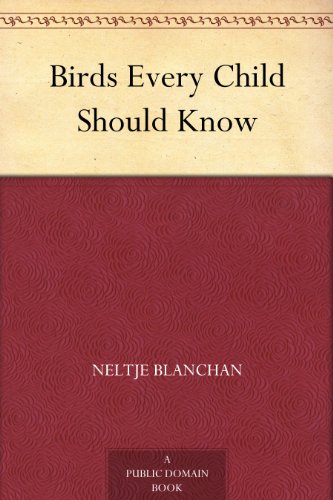
-
Heroes Every Child Should Know
Hamilton Wright Mabie
eBookThis book was converted from its physical edition to the digital format by a community of volunteers. You may find it for free on the web. Purchase of the Kindle edition includes wireless delivery.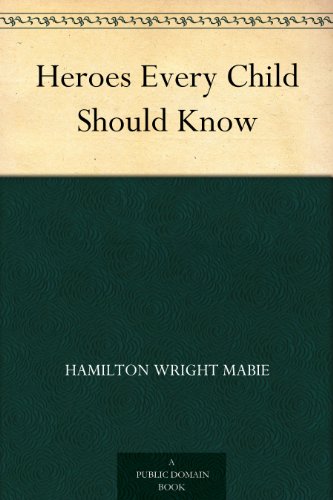
-
Everyone a Child Should Know
Clare Heath-Whyte
Hardcover (10Publishing, Oct. 11, 2017)It s never too early to introduce the next generation to some of the heroes of faith. In this book children will meet 52 christian men and women (one for each week of the year) from all walks of life who wanted to live for their friend Jesus. There are missionaries, martyrs, writers, reformers, politicians and poets. Their stories are exciting and inspiring and will show children that any of Jesus friends can do remarkable things for him - even them! The book covers the following people: Brother Andrew; Augustine; Gladys Aylward; Johann Sebastian Bach; Thomas Barnardo; Corrie ten Boom; William and Catherine Booth; Anne Bradstreet; John Bunyan; John Calvin; William Carey; Amy Carmichael; George Washington Carver; John Chrysostom; Fanny Crosby; Joni Eareckson Tada; Edward VI; Jim and Elisabeth Elliott; Billy Graham; Argula von Grumbach; Mary Jones; Adoniram Judson; John Knox; C. S. Lewis; Eric Liddell; Katie Luther; Martin Luther; Dwight L. Moody; Hannah More; George Mueller; John Newton; Florence Nightingale; Rosa Parks; Patrick; Robert Raikes; Rembrandt; Selina, Countess of Huntingdon; Lord Shaftesbury; Mary Slessor; Charles Spurgeon; C. T. Studd; Hudson Taylor; Lilias Trotter; William Tyndale; Charles Wesley; John Wesley; Susanna Wesley; George Whitefield; William Wilberforce; Richard Wurmbrand; John Wycliffe; Katharina Zell.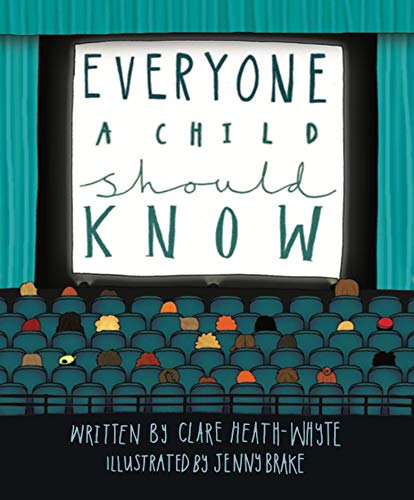
-
Poems Every Child Should Know
Mary E. Burt
Paperback (Yesterday's Classics, Sept. 18, 2008)An outstanding collection of poems that appeal to both boys and girls, compiled by a teacher who believed in the formative power of learning poetry by heart. “Children,” she maintains, “should build for their future ― and get, while they are children, what only the fresh imagination of the child can assimilate. They should store up an untold wealth of heroic sentiment; they should acquire the habit of carrying a literary quality in their conversation; they should carry a heart full of the fresh and delightful associations and memories connected with poetry hours to brighten mature years. They should develop their memories while they have memories to develop.” The poems are grouped into six sections (The Budding Moment, The Little Child, The Day's at the Morn, Lad and Lassie, On and On, “Grow Old Along with Me”) to make it easier to locate poems that match a child's maturity. Suitable for ages 8 and up.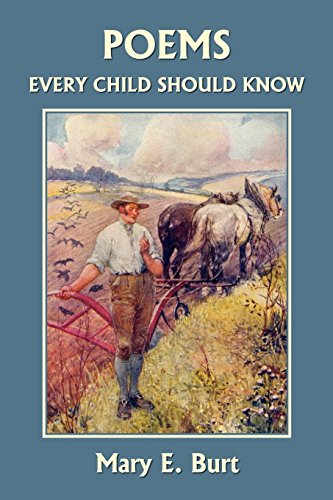
-
Birds Every Child Should Know
Neltje Blanchan, Cornelia F. Mutel, Christine Stetter
Paperback (University Of Iowa Press, March 1, 2000)Originally published in 1907, Birds Every Child Should Know is a collection of storylike descriptions of more than one hundred birds commonly found in the United States. Neltje Blanchan's detailed descriptions of birds—their physical attributes, calls, nesting and mating habits, and other behaviors—are nothing less than enchanting, and some read almost like fairy tales. Take for instance the mockingbird's call: “when the moonlight sheds a silvery radiance about every sleeping creature, the mockingbird sings to his mate such delicious music as only the European nightingale can rival. Perhaps the stillness of the hour, the beauty and fragrance of the place where the singer is hidden among the orange blossoms or magnolia, increase the magic of his almost pathetically sweet voice; but surely there is no lovelier sound in nature on this side of the sea.” or the yellow warbler's nest: “an exquisite little cradle of silvery plant fiber, usually shreds of milkweed stalk, grass, leaves, and caterpillar's silk, neatly lined with hair, feathers, and downy felt of fern fronds.” Blanchan includes folk history (how Native Americans and southern slaves thwarted mosquitoes by hanging gourds to attract purple martins) as well as common threats to birds that foreshadow current dangers to avian life (the toll taken on songbirds by lighthouses and electric towers). Such informative details, along with the author's disarming enthusiasm for her subject, will charm adult bird-watchers as well as children. Cornelia Mutel's informative foreword places Blanchan's writing in the historical context of a turn-of-the-century environmental reawakening and burgeoning activism and research by women on behalf of dwindling bird populations. U
U
-
Myths every child should know
Hamilton Wright (Editor) Mabie, Colleen Browning
Hardcover (Doubleday, Jan. 1, 1955)Mythology comes from many countries and in many forms. This volume contains some of the more familiar Greek and Norse myths Such as Perseus, Midas and Pegasus; and also, a story about the Norse God Odin and the Norse hero Baldur. This book was written at a time when the knowledge of myth was introduced at an early age, to be followed by more classic studies as the student advanced. Taken from Hawthorne, Kingsley and Church.
-
Legends That Every Child Should Know
Ed Hamilton Wright Mabie, Hamilton Wright Mabie
language (Alpha Editions, Jan. 1, 2017)This is a book of legends from around the world. The author Hamilton Wright Mabie, A.M., L.H.D., LL.D. was an American essayist, editor, critic, and lecturer.
-
Trees Every Child Should Know
Julia Ellen Rogers
language (ZeuzssGreen Innovative Press, May 30, 2017)"The best time to begin to study the trees is today! The place to begin is right where you are, provided there is a tree near enough, for a lesson about trees will be very dull unless there is a tree to look at, to ask questions of, and to get answers from. But suppose it is winter time, and the tree is bare. Then you have a chance to see the wonderful framework of trunk and branches, the way the twigs spread apart on the outer limbs, while the great boughs near the trunk are almost bare. Each branch is trying to hold its twigs out into the sunshine, and each twig is set with buds. When these buds open, and most of them send out leafy shoots, the tree will be a shady summerhouse with a thick, leafy roof that the sun cannot look through." - Julia Ellen Rogers, Trees Every Child Should Know
-
Legends That Every Child Should Know
Hamilton Wright Mabie
language (Library of Alexandria, Dec. 13, 2002)The Library of Alexandria is an independent small business publishing house. We specialize in bringing back to live rare, historical and ancient books. This includes manuscripts such as: classical fiction, philosophy, science, religion, folklore, mythology, history, literature, politics and sacred texts, in addition to secret and esoteric subjects, such as: occult, freemasonry, alchemy, hermetic, shamanism and ancient knowledge. Our books are available in digital format. We have approximately 50 thousand titles in 40 different languages and we work hard every single day in order to convert more titles to digital format and make them available for our readers. Currently, we have 2000 titles available for purchase in 35 Countries in addition to the United States, Canada, Australia and New Zealand. Our titles contain an interactive table of contents for ease of navigation of the book. We sincerely hope you enjoy these treasures in the form of digital books.
-
Heroes Every Child Should Know
Hamilton Wright Mabie
Paperback (CreateSpace Independent Publishing Platform, June 25, 2013)A classic collection of stories of heroes from different times, including King Arthur, Sir Galahad, Perseus, Hercules, St. George, Robin Hood, Siegfried, Roland, and others.
-
Poems Every Child Should Know
Unknown Unknown
eBook (, Dec. 10, 2017)A treasure trove of more than two hundred poems, this gem of an anthology compiled by Mary E Burt is indeed a most valuable set of poems to read or listen to.Published in 1904, Poems Every Child Should Know contains some well-loved verses like Thomas Gray's Elegy Written in a Country Churchyard, Lewis Carroll's delightful parody Father William, Felicia Hemans' deeply-moving Casablanca and other favorites. It also has lesser-known but equally beautiful pieces like Henry Wadsworth Longfellow's The Arrow and The Song, Robert Browning's The Incident of the French Camp, Eugene Field's nonsense lyrics Wynken, Blynken and Nod and a host of other wonderful verses.For modern day children, unaccustomed to reading and memorizing poetry, the book is a throwback to the days when this was the norm in most classrooms and homes. Fragments from Shakespeare's Julius Caesar, in which Mark Antony pays tribute to the dead Brutus, Polonius' advice to his son Laertes from Hamlet with the stirring lines, “This above all: to thine own self be true...” are some of the masterpieces contained here.Poems Every Child Should Know also contained some of the most famous poems in English by poets like Wordsworth, Shelley, Keats, Browning and Milton. American poets like Walt Whitman are featured here with their immortal lines in poems like Song of Myself. Another famous American poet found here is Edgar Allan Poe with his iconic The Raven.The book is divided into six parts, with a very interesting and self explanatory preface by the author. She begins with something that readers would say when they first encounter a poetry anthology: “Is this another collection of stupid poems that children cannot use?” and goes on to explain how she selected the ones included here. Most of them were picked because they were short enough for a child to memorize. This is a now forgotten activity that can give hours of pleasure as you recall the lines long after you've put away the book. Others were chosen for the heroic and patriotic sentiments, like The Star Spangled Banner, Lord Ullin's Daughter, The Charge of the Light Brigade, Horatius at the Bridge and a host of other inspiring poems.Mary Elizabeth Burt was a gifted teacher who believed that poetry had the power to inspire, educate and mold young minds so that they could mature into valuable and useful citizens of the country. For modern day readers, this is indeed a delightful collection, which offers endless hours of pleasure as you thumb through rediscovering old favorites, and enjoying new ones.A treasure trove of more than two hundred poems, this gem of an anthology compiled by Mary E Burt is indeed a most valuable set of poems to read or listen to.Published in 1904, Poems Every Child Should Know contains some well-loved verses like Thomas Gray's Elegy Written in a Country Churchyard, Lewis Carroll's delightful parody Father William, Felicia Hemans' deeply-moving Casablanca and other favorites. It also has lesser-known but equally beautiful pieces like Henry Wadsworth Longfellow's The Arrow and The Song, Robert Browning's The Incident of the French Camp, Eugene Field's nonsense lyrics Wynken, Blynken and Nod and a host of other wonderful verses.For modern day children, unaccustomed to reading and memorizing poetry, the book is a throwback to the days when this was the norm in most classrooms and homes. Fragments from Shakespeare's Julius Caesar, in which Mark Antony pays tribute to the dead Brutus, Polonius' advice to his son Laertes from Hamlet with the stirring lines, “This above all: to thine own self be true...” are some of the masterpieces contained here.Poems Every Child Should Know also contained some of the most famous poems in English by poets like Wordsworth, Shelley, Keats, Browning and Milton.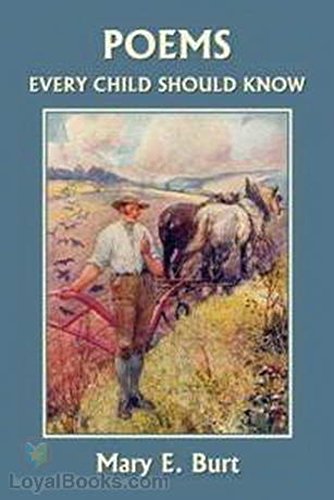
-
Trees Every Child Should Know
Julia Ellen Rogers
language (bz editores, Nov. 27, 2013)Trees Every Child Should Know - Easy Tree Studies for All Seasons of the Year by Julia Ellen RogersThe best time to begin to study the trees is to-day! The place to begin is right where you are, provided there is a tree near enough, for a lesson about trees will be very dull unless there is a tree to look at, to ask questions of, and to get answers from. But suppose it is winter time, and the tree is bare. Then you have a chance to see the wonderful framework of trunk and branches, the way the twigs spread apart on the outer limbs, while the great boughs near the trunk are almost bare. Each branch is trying to hold its twigs out into the sunshine, and each twig is set with buds. When these buds open, and most of them send out leafy shoots, the tree will be a shady summerhouse with a thick, leafy roof that the sun cannot look through. Among the big branches near the trunk very few leaves will be found compared with the number the outer twigs bear.How can we tell whether the tree is alive or dead in winter? Break off a twig. Is there a layer of green just inside the brown bark? This is the sign that the tree is alive. Dead twigs are withered, and their buds are not plump and bright. The green is gone from under the bark of these twigs.Under each bud is the scar of last year’s leaf, and if you look on the ground you are pretty sure to find a dead leaf whose stem fits exactly into that scar. If there are a number of these leaves under the tree, you may feel sure that they fell from the tree last autumn. Look carefully among the leaves, and on the branches for the seeds of this tree. If there is an acorn left on the tree, you may be sure that you have the tree’s name!The name is the thing we wish first to know when we meet a stranger. If an acorn is found growing on a tree, that tree has given us its name, for trees that bear acorns are all oaks. An acorn is a kind of nut, and there are many kinds of oaks, each with its own acorn pattern, unlike that of other oaks. Yet all acorns sit in their little acorn cups, and we do not confuse them with nuts of other trees. So we know the family name of all trees whose fruits are acorns. They are all oaks, and there are fifty kinds in our own country, growing wild in American forests. But if those of all countries are counted, there are in all more than three hundred kinds.